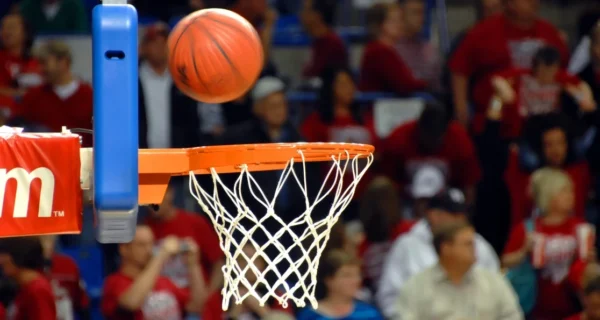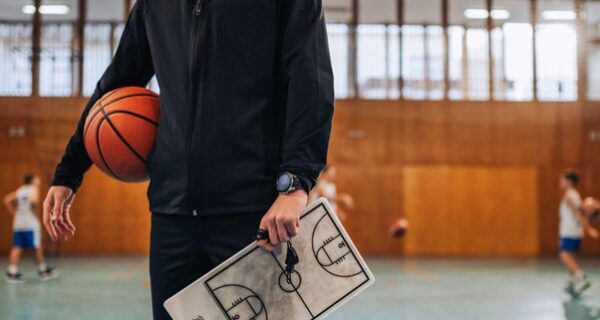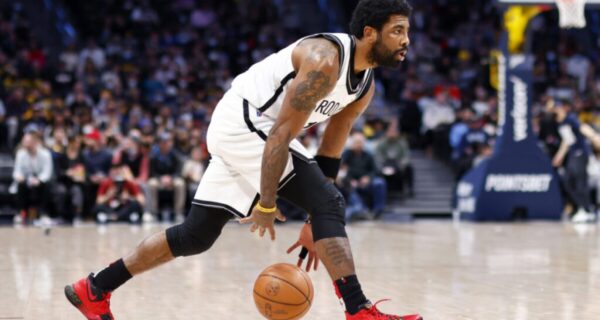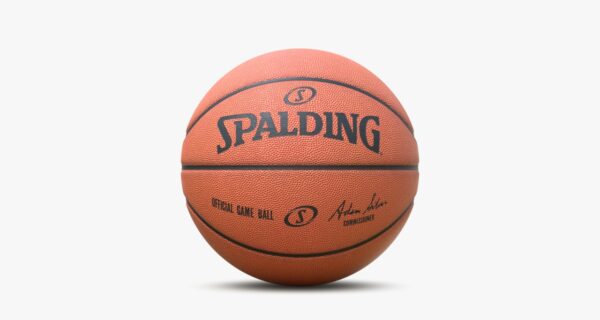In basketball, a backboard is a vertical board behind the basket. It provides a rebounding surface for the ball during shots.
The backboard is an essential basketball equipment component for gameplay and practice.
Typically made of flat, rigid material such as tempered glass, plexiglass, fiberglass, or wood, the backboard aids players in aligning their shots and bank shots.
It’s standardized in size and height for professional play, ensuring consistency across courts.
The presence of the backboard adds an extra challenge for players, requiring precise aim and control to score points successfully.
Its design also includes a mounted hoop and net, which are the primary scoring apparatus of the game.
This integral part of the basketball setup enhances the play and gives spectators clearer visibility of scoring shots.
Basics of the Basketball Backboard
The backboard, an essential feature in basketball, impacts the game significantly. Players aim to score baskets, making it a focal point during play. Knowing its specifics helps players and fans appreciate the game better.
Materials and Dimensions
Standard basketball backboards come in various materials. Commonly used materials include tempered glass, acrylic, and polycarbonate. Each material offers unique benefits.
Tempered glass is professional-grade, offering clear visibility and sturdy rebound. Acrylic is lighter and more durable, making it a favorite for home systems. Polycarbonate stands out for its toughness.
- Tempered Glass: preferred in pro leagues
- Acrylic: balance between quality and cost
- Polycarbonate: high durability against impact
Backboards vary in size. Regulation size measures 72 inches wide and 42 inches high. Recreational backboards can be smaller.
| Material | Width | Height |
|---|---|---|
| Tempered Glass | 72 inches | 42 inches |
| Acrylic | 54-60 inches | 33-38 inches |
| Polycarbonate | 44-60 inches | 30-35 inches |
Evolution of Design
The design of the basketball backboard has evolved. Early backboards were wooden, lacking the rebound effect of modern boards. Glass backboards were introduced to improve spectator visibility.
Today, safety features such as breakaway rims have been added to prevent injuries and damage.
- Wooden Backboards: the original design
- Glass Backboards: improved game visibility
- Breakaway Rims: added for player safety
Modern backboards also feature a white-outlined square. This “shooter’s square” helps players aim better. LED lighting is a recent addition for enhanced spectator experience.
Backboard’s Role in the Game
The backboard is a vital part of basketball equipment. It serves multiple functions in the game. Players use it to aim and score points.
They also use it in their strategies during the game. Without the backboard, basketball would be a very different sport.
Scoring Dynamics
The backboard shapes how players score in basketball. Its presence affects the way players throw the ball. A player can bounce the ball off the backboard into the hoop. This action is known as a bank shot.
- Direct shots: Players aim straight into the hoop.
- Bank shots: Use the backboard at angles to score.
- Layups: Close-range shots that often include the backboard.
Rebounding Strategies
Rebounding involves gaining possession after a missed shot. The backboard plays a crucial role in this. Players position themselves based on where the ball might bounce:.
| Position | Rebound Likelihood |
|---|---|
| Directly under the basket | High for short-range shots |
| Further out | High for long-range shots |
| At an angle | Good for bank shots |
Effective rebounding can lead to additional scoring chances. Teams often practice specific patterns and movements to improve rebounding off the backboard.
Understanding how the ball interacts with the backboard allows players to anticipate where the ball will go.
Types of Backboards
Basketball backboards come in a range of shapes and materials. The backboard is critical for rebounds and bank shots. Different types serve various needs and preferences.
Whether for a community park or a home driveway, backboards greatly influence your basketball experience. Let’s dive into the various styles available.
Rectangular vs. Fan-shaped
Rectangular backboards are the standard in competitive basketball. They provide a wide surface for banking shots and rebounds. This shape is common in both professional and school gyms.
Fan-shaped backboards, on the other hand, are compact. They are often found in home setups and recreational spaces. They cost less and take up less space.
Portable vs. Fixed Systems
| Portable Systems | Fixed Systems |
|---|---|
| Have wheels for easy movement | Mounted securely on walls or poles |
| Ideal for home use | Common in professional settings |
| Flexible for various spaces | Durable for long-term play |
Portable basketball systems offer flexibility. You can move them as needed. They are great for casual play. Schools and homes use them widely.
Fixed systems stand the test of time. They are permanent fixtures. You often see them in professional arenas and public courts. They are stable and sturdy.
Backboard Regulations
In basketball, the backboard is a game-changer. Rules for backboards differ depending on the level of play. Knowing these can help players and fans understand the game better.
Professional League Standards
Professional leagues, like the NBA, have strict backboard guidelines. All pro backboards must meet these specs:
- Size: 6 feet by 3.5 feet
- Material: Half-inch thick glass
- Inner rectangle: 24 inches wide by 18 inches high
- Border: A 2-inch white outline
These standards ensure fairness and consistency in professional games.
Amateur and Recreational Play
Amateur courts vary more in backboard design. The rules are not as strict as in pro levels. But they often follow these guidelines:
- Size: Commonly smaller than professional ones
- Material: Can be acrylic, polycarbonate, or even wooden
- Markings may differ, but having a white rectangle is standard
- Rim height: Set at 10 feet
Schools and parks choose backboards based on need and budget. Yet, they try to keep them close to official sizes for better practice.
Technology and Innovation
Exploring the basketball world, we often marvel at the sheer athleticism and skill on display. But behind every explosive dunk and mesmerizing layup is the silent, steadfast presence of the backboard.
Not just any piece of equipment, the backboard has transformed thanks to technology and innovation.
Breakaway Rims Integration
The integration of breakaway rims into basketball hoops represents a significant technological leap.
Initially, rims were rigid, with no give, leading to shattering backboards when players like Darryl Dawkins threw down powerful dunks.
Now, breakaway rims use a hinge and spring mechanism to absorb the kinetic energy from a dunk, protecting the backboard and players from injury.
They snap back into place once the pressure releases, allowing the game to continue without interruption or damage.
Impact-resistant Materials
Modern backboards use impact-resistant materials to withstand the rough and tumble of intense basketball games.
Typically made from tempered glass, acrylic, or polycarbonate, these materials ensure a long-lasting and clear playing surface.
Tempered glass offers a professional look and feel but can be heavy and expensive. Acrylic provides a lighter option with decent durability.
Polycarbonate stands out for its resistance to impact, making it an ideal choice for playgrounds and schools. Each material offers unique benefits:
- Tempered Glass: Professional standard, best rebound.
- Acrylic: Lighter than glass, lower cost.
- Polycarbonate: Virtually unbreakable, safe for all.
Players’ Interaction With Backboard
A backboard’s role in basketball extends far beyond its most basic function. It’s a dynamic surface that enables creative plays and tough defense. Let’s explore how players harness the backboard’s potential in the game.
Alley-oops and Bank Shots
The backboard isn’t just there for show. Players use it for alley-oops and bank shots. These plays show skill and can wow fans.
- Alley-oops happen when players toss the ball near the backboard, and a teammate jumps, catches, and scores in midair.
- Bank shots are when players aim the ball to hit the backboard first and then drop into the hoop. It’s a skillful move, often used from an angle.
Defensive Use During Blocks
Defenders also have their time with the backboard. They use it to block or alter shots.
| Player | Action | Outcome |
|---|---|---|
| Defender | Times their jump | Blocks the ball against the backboard |
| Defender | Positions themselves | Makes shooting difficult |
A smart defender knows how to use the backboard to their advantage. They make it tough for the offense to score.
Maintenance of Backboards
A basketball backboard is essential for a great game. Keeping it in top shape is key. We’ll discuss simple ways to maintain your backboard.
Cleaning Practices
Regular cleaning ensures a clear, playable surface. Here’s a quick guide:
- Use mild soap and warm water.
- Gently scrub with a soft cloth.
- Avoid harsh chemicals.
- Rinse with clean water.
- Dry with a non-abrasive towel.
Durability and Longevity
Long-lasting backboards need care. Take note of these tips: Check for damage regularly. Look for cracks and weak spots. Tighten all hardware. Loose bolts can lead to more damage. Upgrade if needed. High-quality materials last longer.
Famous Backboard-breaking Moments
The backboard, an essential part of the basketball hoop, has witnessed spectacular moments.
One thrilling spectacle in basketball is when a player shatters the backboard. These events have fans leaping from their seats and creating unforgettable memories.
Historical Incidents
Backboard-breaking moments are rare, but they etch themselves in history when they happen. Let’s recall some of these jaw-dropping incidents:
- Darryl Dawkins: Known as “Chocolate Thunder,” he famously shattered two backboards in 1979.
- Shaquille O’Neal: “Shaq” brought down the backboard and the entire support structure in 1993.
- Michael Jordan: While not in an NBA game, Jordan broke a backboard during a Nike exhibition tour in 1985.
Effects on Game Play Rules
Backboard shattering impacts more than just the game at hand; it shapes the rules. To address these disruptions:
- Improved Equipment: Strengthened hoops and backboards are now used.
- Technical Foul Rule: Players can be penalized for intentionally breaking a backboard.
- Delay of Game: The team whose player breaks the board can be penalized with a delay of game.
Choosing the Right Backboard
Choosing the right backboard is a critical decision in the game of basketball. The backboard’s size, material, and durability can affect gameplay and training.
Whether for institutional settings or personal home use, selecting the appropriate backboard ensures players can enjoy and improve their game safely and effectively.
Considerations for Institutions
Institutions such as schools, sports centers, and professional arenas should prioritize durability and standardization in their selection of basketball backboards.
Key factors include:
- Regulation Size: Adherence to official dimensions ensures competitive fairness.
- Material Quality: Tempered glass or high-quality acrylic stands up to rigorous use.
- Padding: Safety padding minimizes injury risks during play.
Budget constraints often play a role. Institutions may need to balance cost with quality. Proper mounting and height adjustment mechanisms are essential for varied player age groups.
Home and Personal Use
For home use, backboards should fit the space and usage requirements. Important elements include:
- Size: Smaller boards are sufficient for limited spaces.
- Material: Acrylic or polycarbonate is durable for recreational play.
- Adjustability: Height adjustments cater to growing family members.
Personal preferences, such as portability and ease of installation, may guide the choice. Home backboards come in various designs, allowing for driveway, wall-mounted, or portable systems.
Backboard’s Impact on Training
The backboard, a crucial element in basketball, is far more than a simple panel. It’s a vital training partner for honing skills and perfecting game strategies.
Understanding the backboard’s role is key to elevating a player’s performance.
Drills and Skills Development
When players focus on the backboard, they train more than just their shooting technique. This robust surface aids in developing a diverse set of skills:
- Accuracy: Aiming for the square on the backboard improves shot precision.
- Rebounding: Players learn optimal angles for grabbing rebounds.
- Bank shots: The backboard becomes essential for mastering this versatile scoring method.
Regular practice with the backboard sharpens a player’s in-game reflexes and decision-making.
Using the Backboard in Practices
Employing the backboard effectively transforms regular practices. Here are how coaches and players can use the backboard:
- Target Practice: Practice shots using the square as a reference.
- Passing Drills: Improve passing angles and strength by using the backboard.
- Defensive Exercises: Deflecting balls off the backboard to simulate game situations.
These structured drills turn the backboard into a silent yet effective trainer that consistently challenges players to elevate their games.
Frequently Asked Questions
Where is the Backboard in Basketball?
In basketball, the backboard is mounted above the rim at the end of the court. It provides a rebound surface for shots.
What is a Backboard, and What is It Used for?
A backboard is a sturdy, flat board used to safely immobilize and transport patients with spinal or limb injuries. It prevents further injury during movement.
What is the Board Behind the Basket Called?
The board behind the basketball hoop is known as the backboard.
What is the Difference Between Backboard and Rim?
The backboard is the flatboard behind the hoop; the rim is the hoop attached to the backboard where the ball goes through.
What Does ‘Backboard’ Mean in Basketball?
In basketball, a backboard is a vertical board with a mounted hoop to score points during the game.
Conclusion
Understanding the backboard in basketball is essential for players and fans alike. This integral piece of equipment influences shots and game dynamics.
Mastery of the backboard’s role can enhance playing strategies and enjoyment of the game. Embrace its importance for a fuller appreciation of basketball’s intricacies.
Keep shooting, keep playing, keep learning.













